
How to Use TB6612FNG: Examples, Pinouts, and Specs
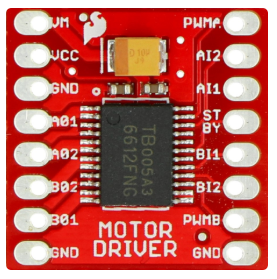
 Design with TB6612FNG in Cirkit Designer
Design with TB6612FNG in Cirkit DesignerIntroduction
The TB6612FNG is a dual H-bridge motor driver IC manufactured by Arduino, designed to control two DC motors or one stepper motor. It supports PWM (Pulse Width Modulation) for precise speed control and direction management. With a compact design and robust performance, the TB6612FNG is widely used in robotics, automation, and other motor control applications.
Explore Projects Built with TB6612FNG
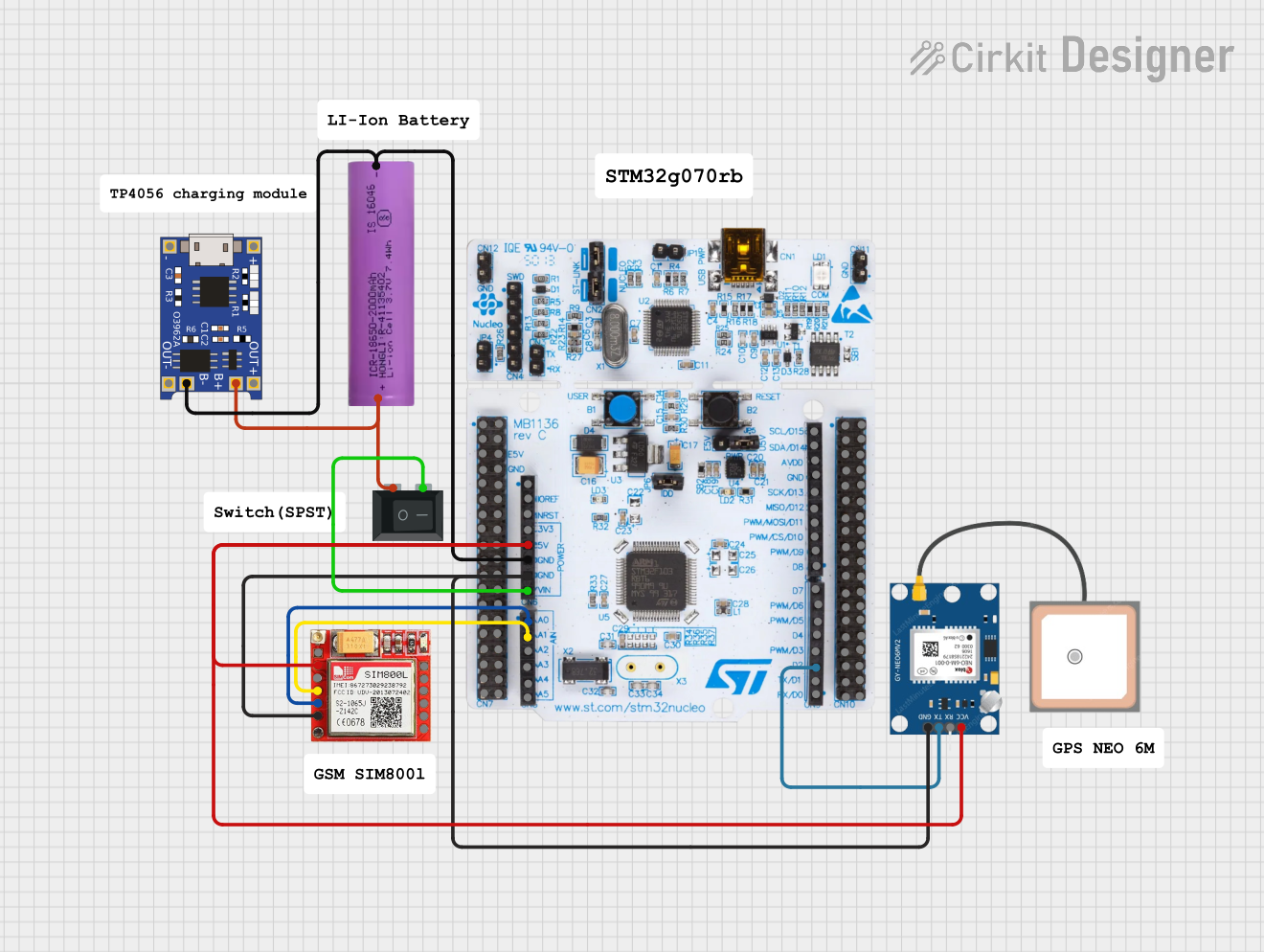
 Open Project in Cirkit Designer
Open Project in Cirkit Designer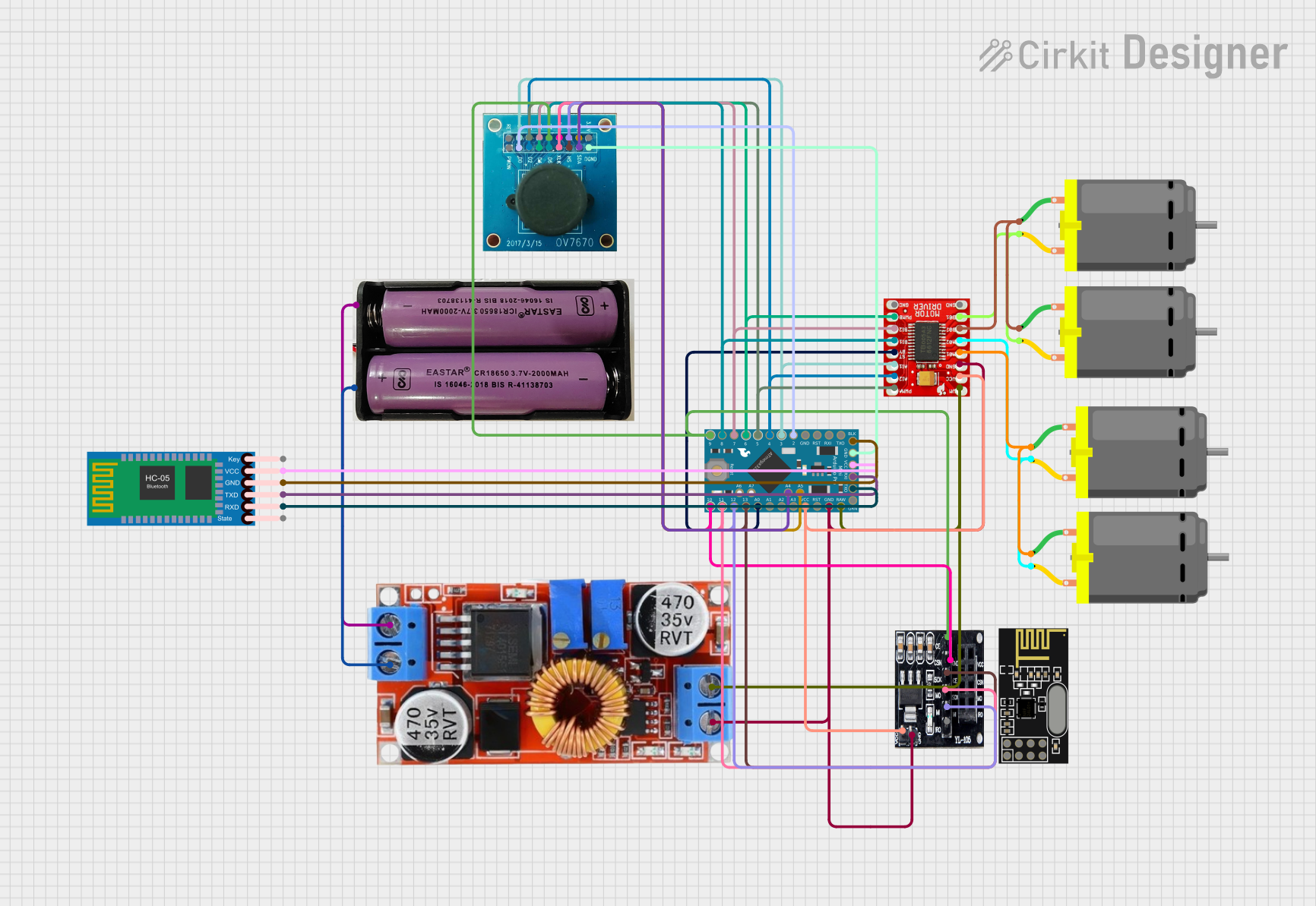
 Open Project in Cirkit Designer
Open Project in Cirkit Designer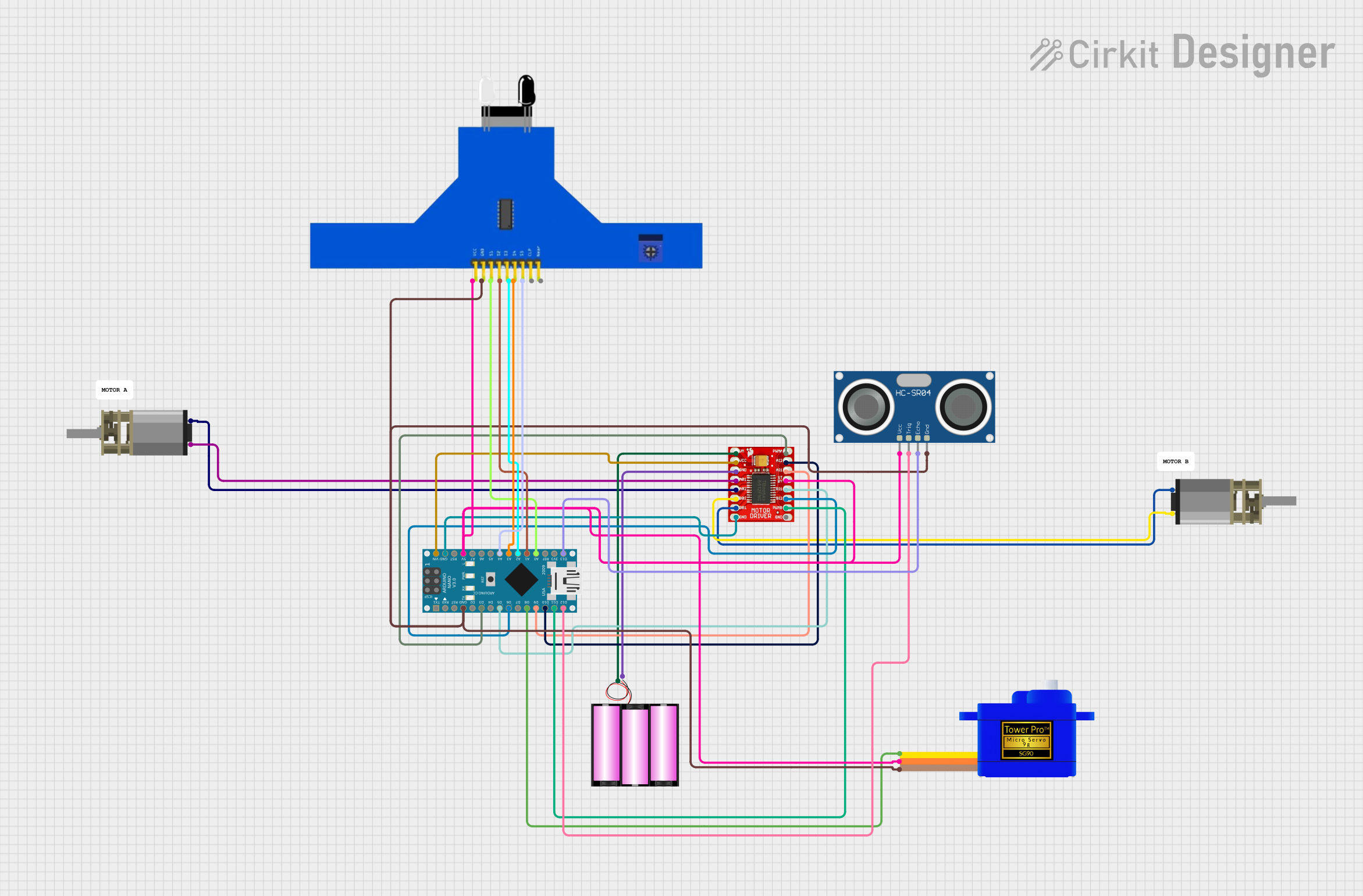
 Open Project in Cirkit Designer
Open Project in Cirkit Designer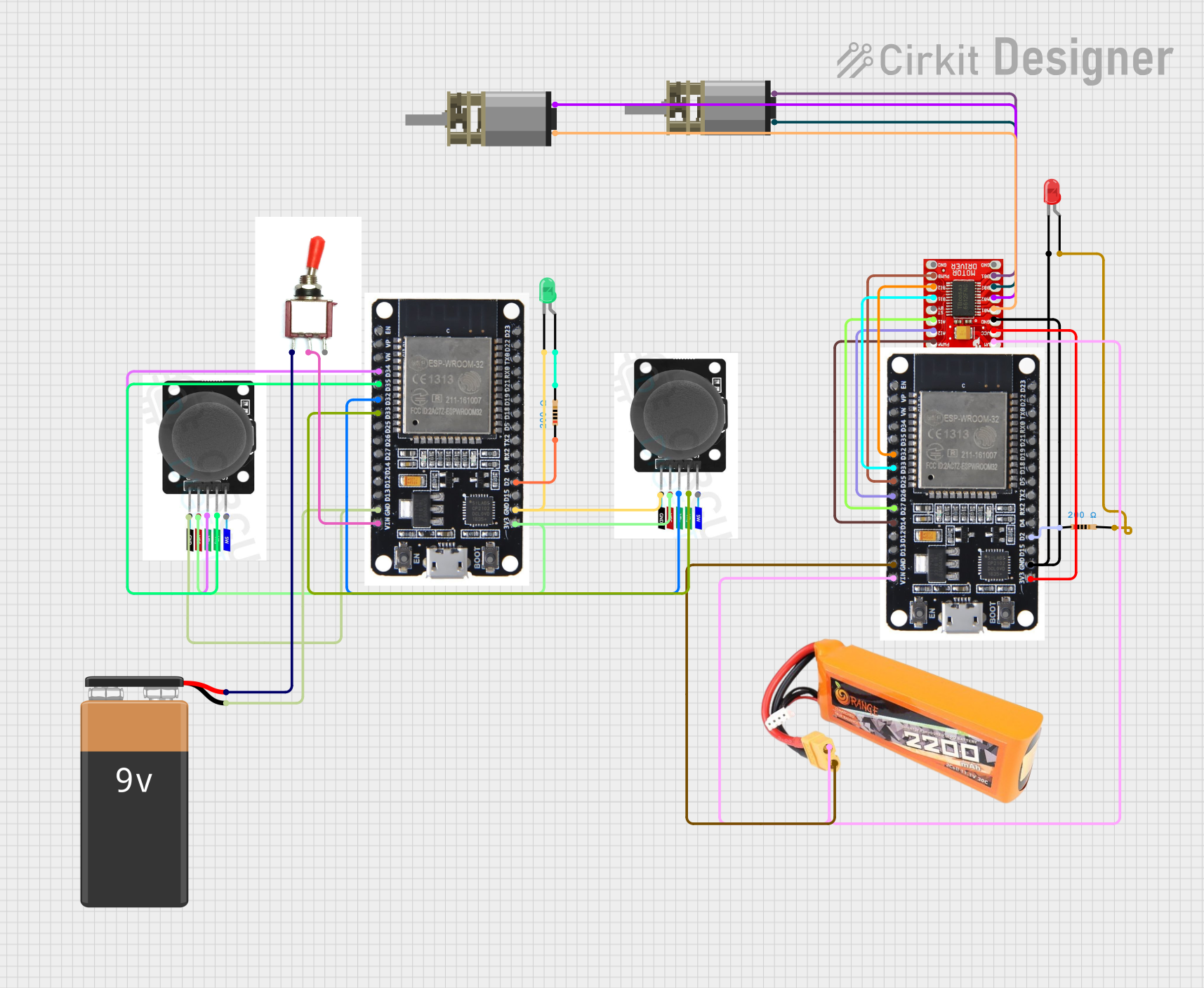
 Open Project in Cirkit Designer
Open Project in Cirkit DesignerExplore Projects Built with TB6612FNG

 Open Project in Cirkit Designer
Open Project in Cirkit Designer
 Open Project in Cirkit Designer
Open Project in Cirkit Designer
 Open Project in Cirkit Designer
Open Project in Cirkit Designer
 Open Project in Cirkit Designer
Open Project in Cirkit DesignerCommon Applications and Use Cases
- Robotics: Driving wheels or actuators in robotic systems
- Automation: Controlling conveyor belts or small machinery
- DIY Projects: Building motorized toys or custom motorized systems
- Stepper Motor Control: Driving stepper motors for precise positioning
Technical Specifications
The TB6612FNG is a versatile motor driver IC with the following key specifications:
| Parameter | Value |
|---|---|
| Supply Voltage (Vcc) | 2.5V to 13.5V |
| Motor Output Current | 1.2A (continuous per channel) |
| Peak Output Current | 3.2A (short duration per channel) |
| Logic Input Voltage | 2.7V to 5.5V |
| Control Method | PWM (Pulse Width Modulation) |
| Operating Temperature | -20°C to +85°C |
| Standby Current | 1 µA (typical) |
Pin Configuration and Descriptions
The TB6612FNG has 16 pins, each serving a specific function. Below is the pinout and description:
| Pin Number | Pin Name | Description |
|---|---|---|
| 1 | AIN1 | Input signal for Motor A direction control |
| 2 | AIN2 | Input signal for Motor A direction control |
| 3 | PWMA | PWM input for Motor A speed control |
| 4 | A01 | Output 1 for Motor A |
| 5 | A02 | Output 2 for Motor A |
| 6 | VM | Motor power supply (2.5V to 13.5V) |
| 7 | GND | Ground |
| 8 | STBY | Standby control (active high to enable the IC) |
| 9 | B02 | Output 2 for Motor B |
| 10 | B01 | Output 1 for Motor B |
| 11 | PWMB | PWM input for Motor B speed control |
| 12 | BIN2 | Input signal for Motor B direction control |
| 13 | BIN1 | Input signal for Motor B direction control |
| 14 | VCC | Logic power supply (2.7V to 5.5V) |
| 15 | NC | No connection |
| 16 | NC | No connection |
Usage Instructions
How to Use the TB6612FNG in a Circuit
Power Connections:
- Connect the
VMpin to the motor power supply (2.5V to 13.5V). - Connect the
VCCpin to the logic power supply (2.7V to 5.5V). - Connect the
GNDpin to the ground of the circuit.
- Connect the
Motor Connections:
- Connect the motor terminals to
A01andA02for Motor A, andB01andB02for Motor B.
- Connect the motor terminals to
Control Signals:
- Use the
AIN1andAIN2pins to control the direction of Motor A. - Use the
BIN1andBIN2pins to control the direction of Motor B. - Apply PWM signals to
PWMAandPWMBto control the speed of Motor A and Motor B, respectively.
- Use the
Standby Mode:
- Set the
STBYpin high to enable the IC. Pull it low to put the IC in standby mode.
- Set the
Important Considerations and Best Practices
- Use appropriate decoupling capacitors near the
VMandVCCpins to stabilize the power supply. - Ensure the motor current does not exceed the maximum continuous current rating of 1.2A per channel.
- Use heat sinks or proper ventilation if operating near the peak current for extended periods.
- Avoid floating input pins; always connect them to a defined logic level.
Example Code for Arduino UNO
Below is an example code to control two DC motors using the TB6612FNG and an Arduino UNO:
// Define motor control pins
#define AIN1 7 // Motor A direction control pin 1
#define AIN2 8 // Motor A direction control pin 2
#define PWMA 9 // Motor A speed control (PWM) pin
#define BIN1 10 // Motor B direction control pin 1
#define BIN2 11 // Motor B direction control pin 2
#define PWMB 3 // Motor B speed control (PWM) pin
#define STBY 6 // Standby control pin
void setup() {
// Set motor control pins as outputs
pinMode(AIN1, OUTPUT);
pinMode(AIN2, OUTPUT);
pinMode(PWMA, OUTPUT);
pinMode(BIN1, OUTPUT);
pinMode(BIN2, OUTPUT);
pinMode(PWMB, OUTPUT);
pinMode(STBY, OUTPUT);
// Enable the motor driver
digitalWrite(STBY, HIGH);
}
void loop() {
// Motor A: Forward at 50% speed
digitalWrite(AIN1, HIGH);
digitalWrite(AIN2, LOW);
analogWrite(PWMA, 128); // 50% duty cycle (0-255)
// Motor B: Reverse at 75% speed
digitalWrite(BIN1, LOW);
digitalWrite(BIN2, HIGH);
analogWrite(PWMB, 192); // 75% duty cycle (0-255)
delay(2000); // Run motors for 2 seconds
// Stop both motors
analogWrite(PWMA, 0);
analogWrite(PWMB, 0);
delay(2000); // Wait for 2 seconds
}
Troubleshooting and FAQs
Common Issues and Solutions
Motors Not Running:
- Ensure the
STBYpin is set high to enable the IC. - Verify that the power supply voltage is within the specified range for
VMandVCC. - Check the connections to the motor terminals and control pins.
- Ensure the
Motor Running in the Wrong Direction:
- Swap the logic levels on the direction control pins (
AIN1,AIN2,BIN1,BIN2).
- Swap the logic levels on the direction control pins (
Overheating:
- Ensure the motor current does not exceed 1.2A per channel.
- Add heat sinks or improve ventilation around the IC.
PWM Not Controlling Speed:
- Verify that the PWM signal is being generated correctly by the microcontroller.
- Check the connections to the
PWMAandPWMBpins.
FAQs
Q: Can the TB6612FNG drive stepper motors?
A: Yes, the TB6612FNG can drive a stepper motor by controlling the two H-bridges in a coordinated manner.
Q: What happens if the motor current exceeds 1.2A?
A: The IC may overheat or enter thermal shutdown to protect itself. Ensure the motor current stays within the rated limits.
Q: Can I use the TB6612FNG with a 3.3V microcontroller?
A: Yes, the logic input voltage range (2.7V to 5.5V) supports 3.3V microcontrollers.